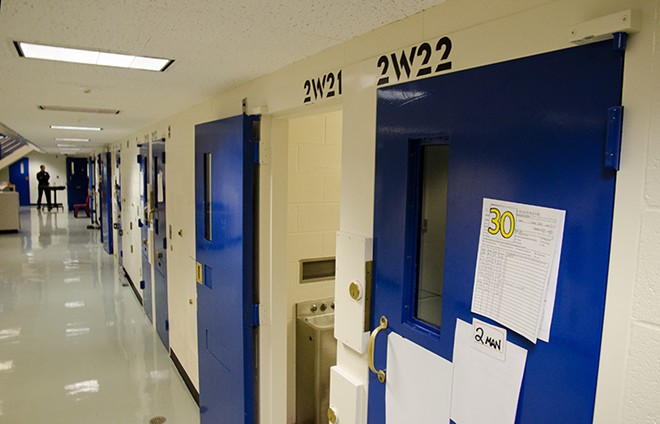There are approximately 47,700 Washingtonians addicted to opioids, according research from University of Washington professors Marc Stern and Lucinda Grande. More than half of those people, about 25,500, will exit the doors of a Washington jail this year, Stern and Grande estimate.
"The numbers showed us that the jails are the epicenter of the opioid crisis," Stern says. "So in some ways, the jail is unfortunately the perfect place to address this problem. It's where you can change behaviors and turn someone's life around."
Stern and Grande's research — a survey of 33 jails across the state of various locations and sizes — shows a "high level of interest" for medication-assisted treatment among jail administrators. A lack of resources, as in doctors legally authorized to prescribe the drugs, and in money available in jails' budgets to pay for them, as well as gaps in knowledge, were among the biggest barriers, Stern says.
The Washington State Opioid Response Plan calls for "jails and prisons to initiate and/or maintain incarcerated persons on medications for opioid use disorder."
Fourteen of the 33 jails surveyed in the study offered at least one of the three drugs approved to treat opioid dependence, the most common being buprenorphine (one of the active drugs in Suboxone).
None of the smaller facilities included in the survey (with an average population of less than 50 people) offered medication-assisted treatment.
"It's the smaller places that are really challenged in resources and knowledge," Stern says. "It's disproportionately harder to provide good health care in a small jail."
Indeed, throughout Washington, there is a patchwork of medication-assisted treatment in jails — from Spokane County's methadone program, to Ferry County's complete lack of providers, to Whatcom County's refusal to provide such treatment, to Island County's full-tilt support. In Spokane, eight people have died in the jail since June 2017, including one woman on Aug. 25. Several of the deaths are suspected to be drug related.
The state has just applied for a federal grant worth about $21 million to increase access to medication for opioid treatment in jails and the community generally, says Charissa Fotinos, deputy chief medical officer for the state Health Care Authority.
"Many jails in the state are interested in starting people on medication-assisted treatment or continuing it," Fotinos says. "One challenge jails have had is the medication is expensive. People's Medicaid is suspended, and jails don't have a way to pay for buprenorphine."
Fotinos says one of the state's priorities is to target people released from jails and prisons "because they're at the highest risk for a fatal opioid overdose."
Aside from the life-saving potential, Stern points to data from the Washington State Institute for Public Policy (WSIPP) showing that drug treatment in prisons, and in the community after a person is released, have huge cost-saving impacts.
Additionally, a 2006 report from Washington State Institute for Public Policy shows that in-custody drug treatment can reduce crime by 5.7 percent and save nearly $8,000 per patient, when considering crime victims, benefits to taxpayers and the cost of providing the treatment.
"For a moment, you have your hands on 50 percent of the opioid dependent people in the state... when they're malleable," Stern says. "If you invest money in this problem, including outside the jail, you can actually make your money back."

















